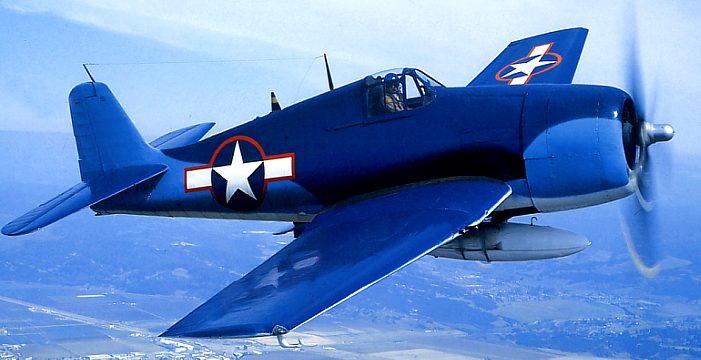![]() Grumman
F6F Hellcat
Grumman
F6F Hellcat![]()

![]()

Type![]() Single-seat
shipborne fighter - also fighter-bomber and night fighter
Single-seat
shipborne fighter - also fighter-bomber and night fighter
Dimensions
Span 42' 10" (13.05 metres) - Length 33' 7" (10.2
metres) - Height 13' 1" (3.99 metres)
Weight (F6F-3)
Empty 9,042 lb (4,101 kg) / Loaded (clean) 12,186 lb (5,528 kg)
/ Loaded (maximum) 14,250 lb (6,443 kg)
Engine
Early production - one 2,000 hp Pratt & Whitney R-2800-10
Double Wasp two-row radial
From Jan 1944 (final batch of F6F-3s) two-thirds
had a 2,200 hp R-2800-10W (water-injection rating)
Armament
6 x 0.5
inch Browning machine-guns with 400 rounds per gun
( Some F6F-5 and F6F-5N Hellcats had 2 x
20 mm cannon plus 4 x
0.5 inch machine-guns)
Underwing attachments for six rockets
Centre-section pylons for up to 2,000 lb of bombs
Performance
Maximum speed (clean) 376 mph
Initial climb (typical) 3,240 feet per minute
Service ceiling 37,500 feet
Range 1,090 miles
![]()

